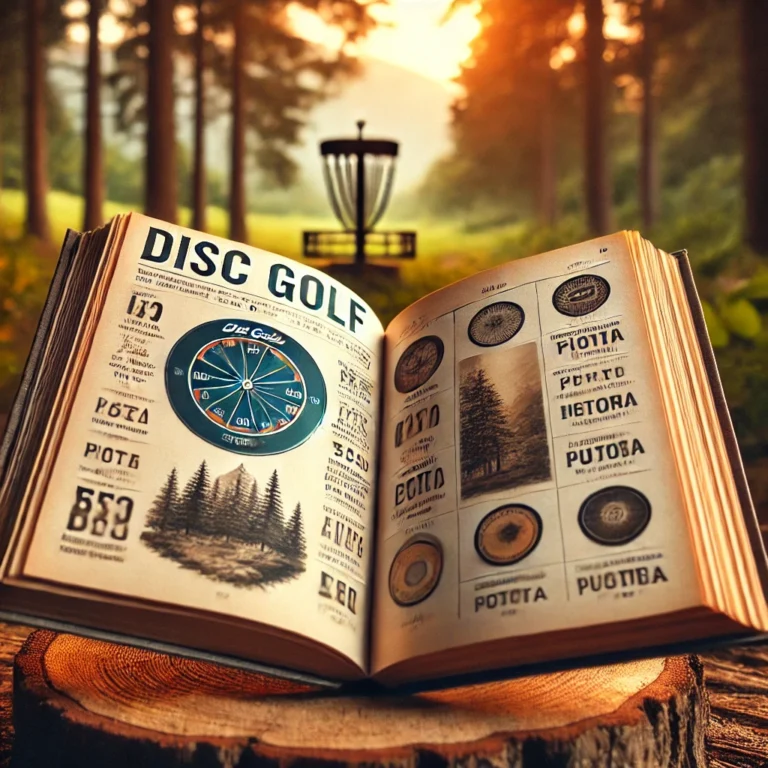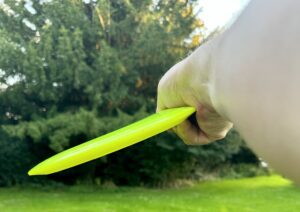Ever stepped onto a disc golf course and wondered about terms like “hyzer,” “anhyzer,” or “hyzer flip”? What do they even mean? This disc golf glossary is here to break down the essential terminology. Whether you’re new to disc golf or sharpening your skills, knowing these terms can boost your game and strategy.
This disc golf glossary unlocks a world of smooth throws. Learn key disc golf terms, flight numbers, and throwing techniques. You’ll gain confidence in your game and communicate like a pro on the course. Get ready to impress your fellow players and take your disc golf game from bewildered beginner to confident course navigator!
Disc Golf Terms and Definitions
Let’s jump into the fascinating world of disc golf terminology. Learning these disc golf definitions and phrases will improve your understanding of the game. It will make communication with other players much easier.
Disc Types and Characteristics:
- Discs: Your trusty companions come in various types, each with distinct purposes:
- Putter: The maestro of short-range accuracy, putters excel at controlled throws for approaching the basket and putting attempts. Putters come in various sub-types, including putt and approach (PAX) discs. These offer slightly more glide and stability compared to traditional putters. They’re great for short approaches and putting duties.
- Mid-range: The “jack-of-all-trades” disc, mid-ranges offer a balance between speed and control, making them ideal for accurate throws across moderate distances. Explore sub-types like understable mid-ranges. These tend to turn (curve right for backhand throws) more readily. They’re useful for navigating tight fairways or creating specific flight paths.
- Driver: Drivers are designed for maximum distance on open holes. They require a powerful throwing motion for optimal flight. Consider factors like “speed” (distance potential) and “glide” (airborne duration) when selecting a driver. Additional driver sub-types include overstable drivers, which resist turning and fight back with a pronounced fade at the end of their flight, ideal for windy conditions or situations requiring a more predictable, straight flight path.
Disc Flight Numbers Meaning
Unveiling the secrets of a disc’s flight path is crucial for being good at disc golf. Manufacturers equip each disc with a code known as “disc golf flight numbers,” which acts like a roadmap for its aerial behavior. Understand the key terms related to flight numbers: speed, glide, turn, and fade. These will help you choose the perfect disc for every situation on the course!
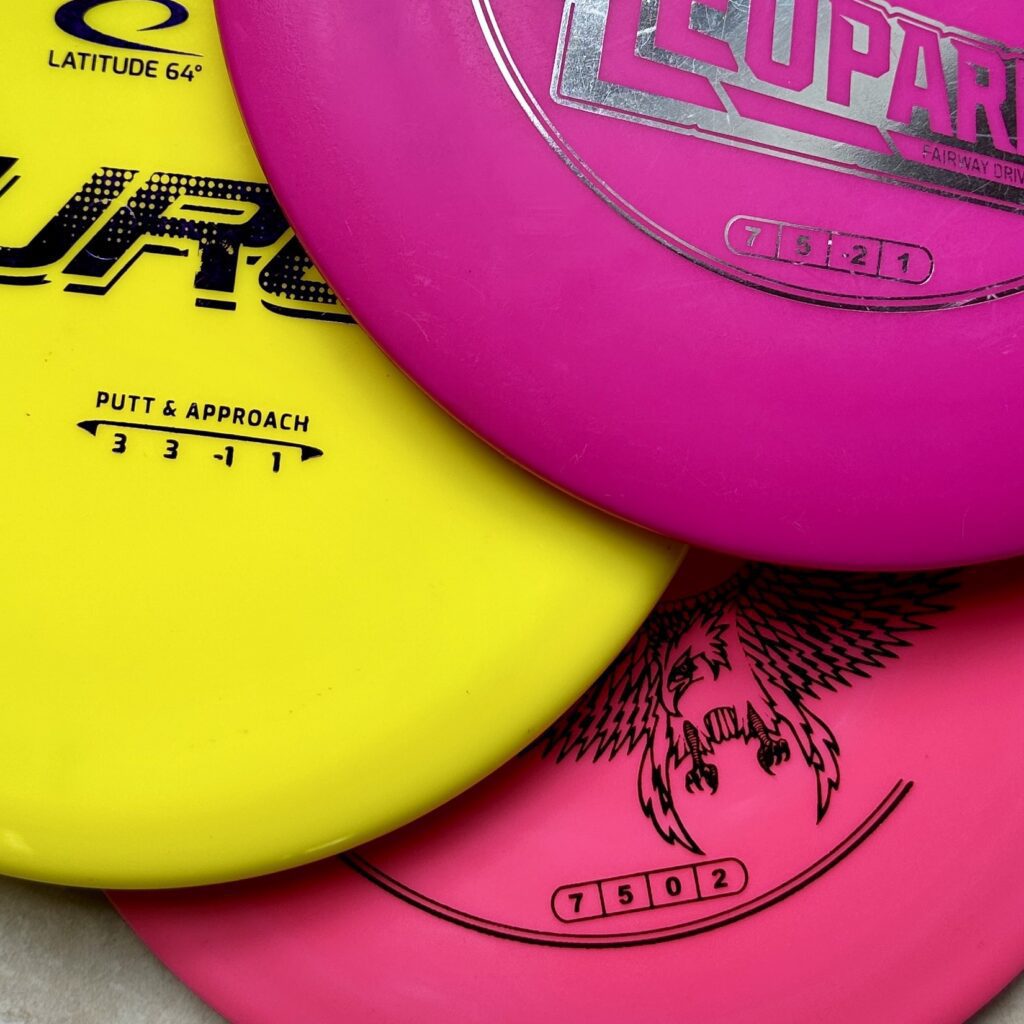
- Speed: This refers to a disc’s potential distance when thrown with proper form. Higher speed discs fly farther, but require a more powerful throw.
- Glide: Glide represents a disc’s ability to stay airborne for an extended period after release. Glider discs maintain flight for longer distances.
- Turn: Turn describes a disc’s tendency to curve to the right for a backhand throw. For a forehand throw, it curves to the left during the initial part of its flight. Understanding turn is crucial for selecting discs that will hold the desired line.
- Fade: Fade represents a disc’s natural tendency to “fight back” towards the left at the end of its flight path (opposite of turn). The interplay between turn and fade determines a disc’s overall flight pattern.
A ‘flippy’ disc refers to a very understable disc. Understable discs tend to have a low turn (typically negative) rating on the disc flight number scale. This means they’ll readily turn right (for a backhand throw) even with a flat release, making them useful for navigating tight fairways or creating specific flight paths. Understanding factors like turn and fade (explained above) will help you choose discs for specific situations
Understanding Disc Flight Characteristics:
By understanding terms like speed, glide, turn, and fade, you can strategically select discs for different situations. For example, a high-speed driver with minimal turn and a strong fade might be ideal for wide-open holes with a tailwind, while a slower, understable mid-range might be your go-to choice for navigating a tight, wooded fairway where you need the disc to curve around obstacles.
Frisbee Golf Terms for Gameplay
- Par: In disc golf terminology, par refers to the expected number of throws to complete a hole. Aiming to complete each hole in par (the designated number of throws) is the goal. Scoring lower than par results in birdies (-1) and eagles (-2), while exceeding par leads to bogies (+1) and double bogies (+2).
- Ace: The ultimate disc golf feat: sinking your disc in the basket in a single throw, also known as a hole-in-one.
- Tee Pad: The designated starting area for each hole on the course, marked by a rectangular concrete or rubber pad.
- Basket: The metallic target with chains where you aim to land your disc.
- Mandatory: A designated route or area that your disc must pass through on a particular hole.
- Out-of-Bounds (OB): Areas marked as OB result in penalty strokes if your disc lands there. Understanding different types of OB areas (e.g., water hazards, designated property lines) is crucial.
Throwing Techniques:
- Backhand Throw: The most common throwing motion, where the disc travels behind your body during the throwing motion. Perfecting proper grip, footwork, and release point is key for accuracy and power.
- Forehand Throw: An alternative throwing motion for specific situations, the forehand throw involves a different body position and disc release point.
Disc Golf Throwing Techniques: Hyzer and Anhyzer
What Is a Hyzer Throw?
Hyzer refers to releasing the disc at a downward angle with the outer rim tilted upwards for a backhand throw (angled downwards for a forehand throw). A hyzer release causes the disc to begin its flight path with a turn to the left (for a backhand throw), but depending on the disc’s flight characteristics (particularly its fade rating), the disc may fight back to the right at the end of its flight for a more controlled landing.
Hyzers are useful for throws where you need the disc to finish right of where you release it, such as navigating around obstacles or curving the disc towards a basket tucked into a corner of the fairway.
What Is an Anhyzer Throw?
Anhyzer (or Anny) is the opposite of a hyzer. It involves tilting the disc’s outer rim downwards at the release point. For forehand throws, the angle is upwards. This creates an initial turn to the right (for a backhand throw) that can be more pronounced than a hyzer flip.
Depending on the disc’s stability, an anhyzer throw may hold its line for a large portion of its flight, making it useful for situations where you need the disc to curve significantly around obstacles or for achieving a roller shot (where the disc skims along the ground for extended distances).

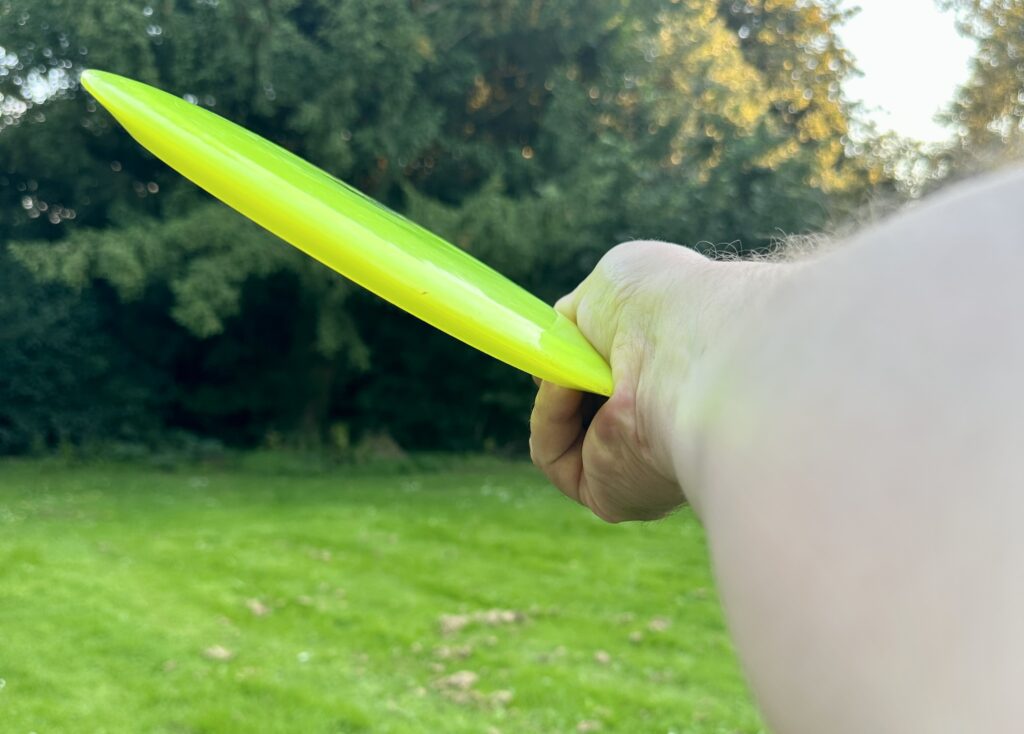
A hyzer release creates a disc flight path that curves left initially (for a backhand throw) before stabilizing or fading right at the end. An anhyzer release, achieved by tilting the disc the opposite way, creates a flight path that curves right initially and can be useful for navigating tight fairways or achieving roller shots.
What Is a Hyzer Flip?
This is an advanced throwing technique that utilizes a hyzer release but achieves a different flight path than a standard hyzer throw. By using a disc with a higher turn rating and releasing it with a hyzer angle, the disc will initially turn significantly to the left (for a backhand throw). However, the disc’s natural turn will overcome the hyzer angle, causing it to “flip” and flatten out, or even turn slightly to the right, during the mid-flight. The hyzer flip helps achieve a farther flight path with a controlled finish. It’s especially useful for navigating obstacles or reaching distant baskets requiring a more nuanced approach.
By perfecting these disc golf techniques (hyzer, anhyzer, and hyzer flip) and understanding disc flight characteristics, you’ll be well on your way to conquering a variety of throws on the course and lowering your score!
Disc Golf Sayings and Course Strategies
Now that you’re familiar with the core disc types and terminology, let’s explore the intricacies of disc golf gameplay and delve deeper into some course-specific disc golf glossary terms.
Gameplay Nuances:
- Lie: The position of your disc after it comes to rest following a throw. Understanding your lie (e.g., flat on the fairway, lodged in a tree branch) is crucial for determining your next shot selection.
- Mandatory Layup: This defines a specific route you must take on your approach shot. It often leads directly to the basket on a particular hole. Mandatory layups can be designated by signage or marked with natural features like rock outcroppings or bodies of water.
- Drop Zone: A designated area on a hole where you can take a one-stroke penalty to re-throw your disc if your original throw landed in an unplayable lie (e.g., stuck in a deep patch of mud).
- Putting: The art of throwing the disc from short range with the intent of landing it in the basket. Grasping putting technique is essential for lowering your score.
Disc Selection:
Choosing the right disc for the situation is crucial. Here’s how some key terms can guide your selection:
- Difference Between Putter and Mid-Range: Putters prioritize accuracy and control for short approaches and putting, while mid-ranges offer a balance between speed and control for throws across moderate distances.
- Overstable vs. Understable: Overstable discs resist turning and have a strong fade. They are ideal for windy conditions or when you need a predictable flight path. Understable discs, on the other hand, tend to turn more readily, useful for navigating tight fairways or creating specific flight shapes.
Disc Golf Course Glossary:
- Fairway: The intended path from the tee pad to the basket, typically consisting of open terrain or strategically placed trees and other obstacles. Understanding the characteristics of the fairway (e.g., width, elevation changes) helps you strategize your throws.
- Rough: Areas outside the fairway, often consisting of denser vegetation or uneven terrain, which can make retrieving your disc more challenging and potentially lead to penalty strokes.
- Mando: A shorthand term for “mandatory,” referring to a designated route or area that your disc must pass through on a particular hole.
- DGA: The Professional Disc Golf Association, the governing body for professional disc golf competition. Understanding the DGA rules helps ensure fair play during casual rounds or tournaments.
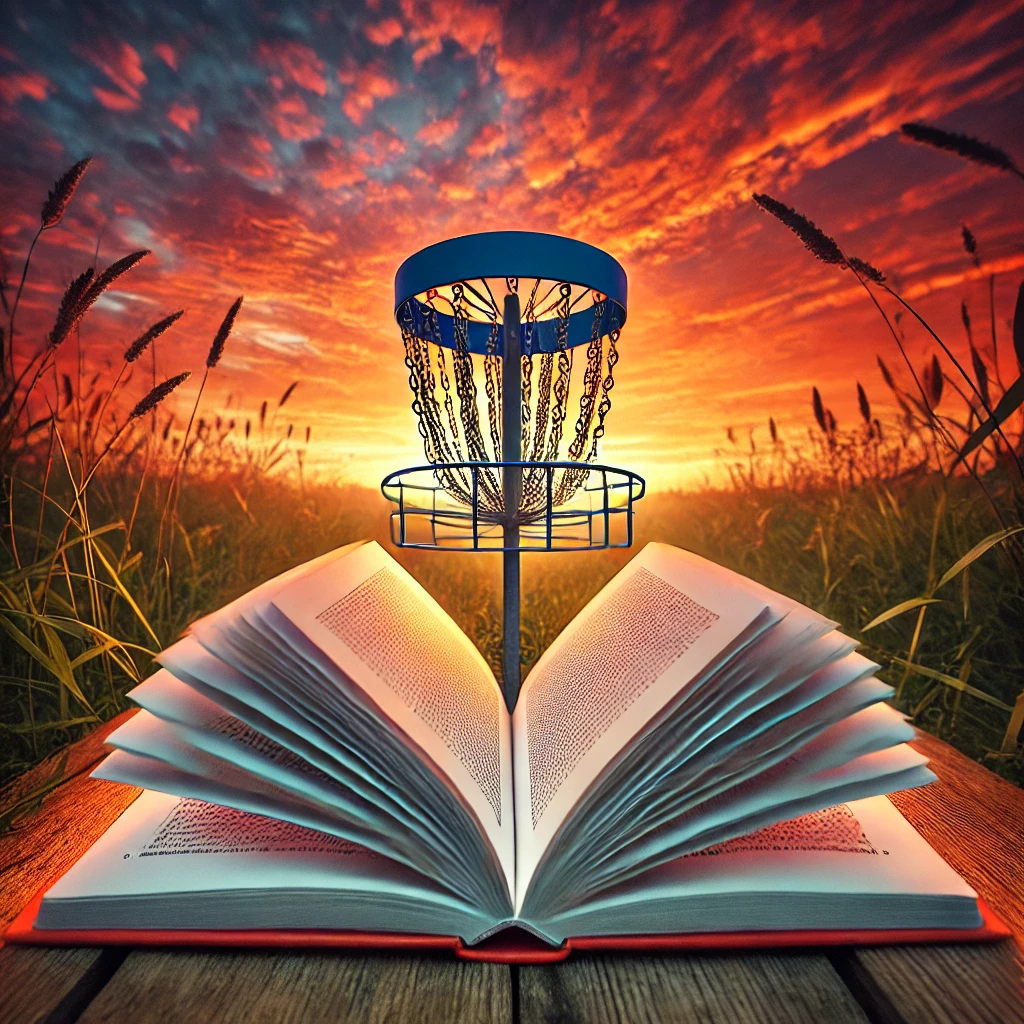
Etiquette and Sportsmanship:
Disc golf is a sport built on courtesy and respect. Here are some essential terms and practices related to proper disc golf etiquette:
- Call Your Lie: Honesty is key! Announce the location and lie of your disc to your fellow players.
- Yield to Faster Groups: If a group behind you is playing faster, allow them to pass so as not to impede their pace of play.
- Minimize Distractions: Avoid talking or making noise while another player is throwing.
- Respect the Course: Practice good environmental stewardship. Don’t litter. Always be mindful of the natural surroundings.
Not necessarily! But understanding disc lingo and basic techniques like hyzer, anhyzer, and hyzer flip will improve your game, strategy, and overall enjoyment on the course.
Mastering disc golf glossary and key terms like “hyzer,” “anhyzer,” and “flight numbers” will not only sharpen your skills but make the game even more enjoyable. Keep this disc golf glossary handy as you refine your throws and strategise on the course! Following proper etiquette ensures a positive experience for you and your fellow disc golf enthusiasts. Get ready to high five your buddies for epic aces and celebrate every step of the game together. The course awaits – let’s shred it with respect and pure disc golf passion!

